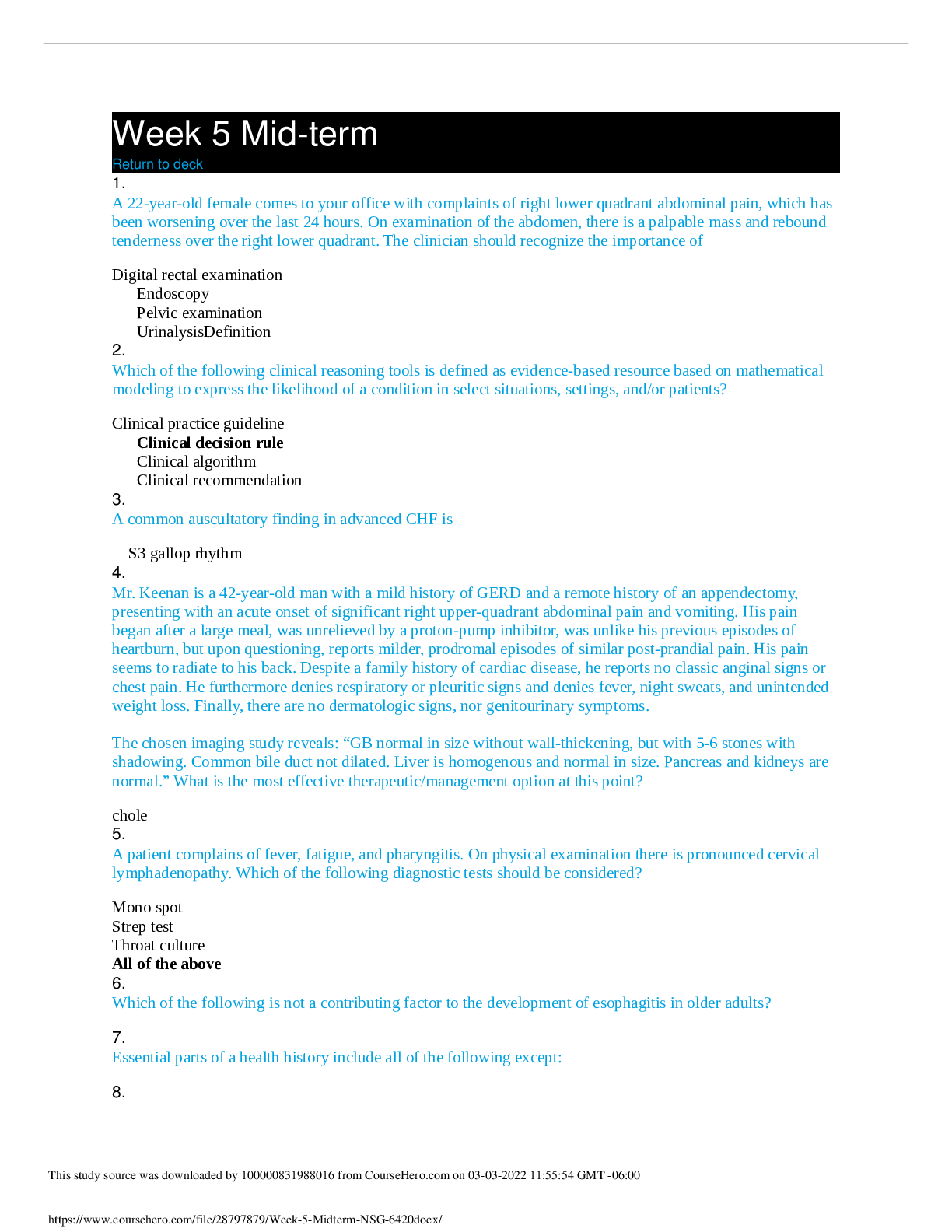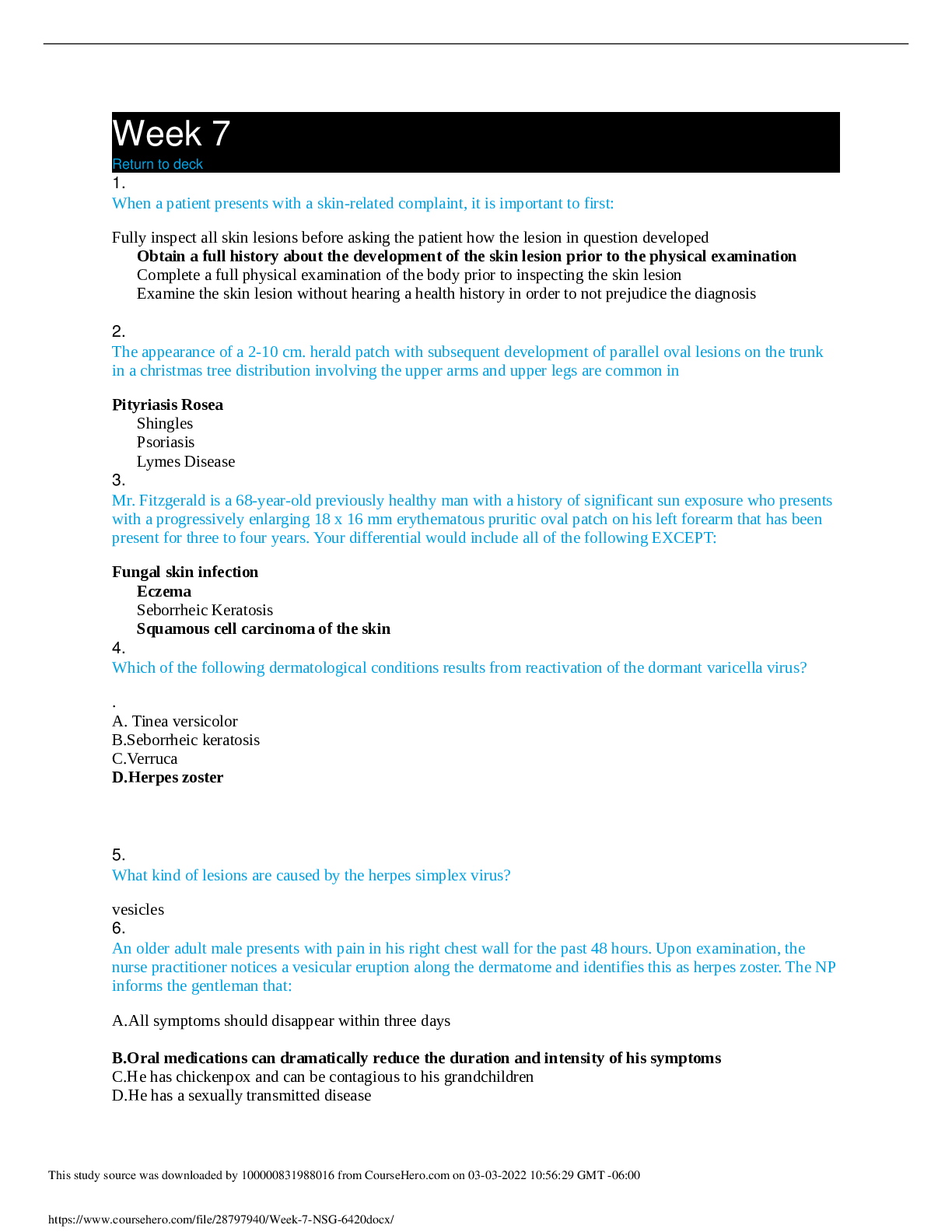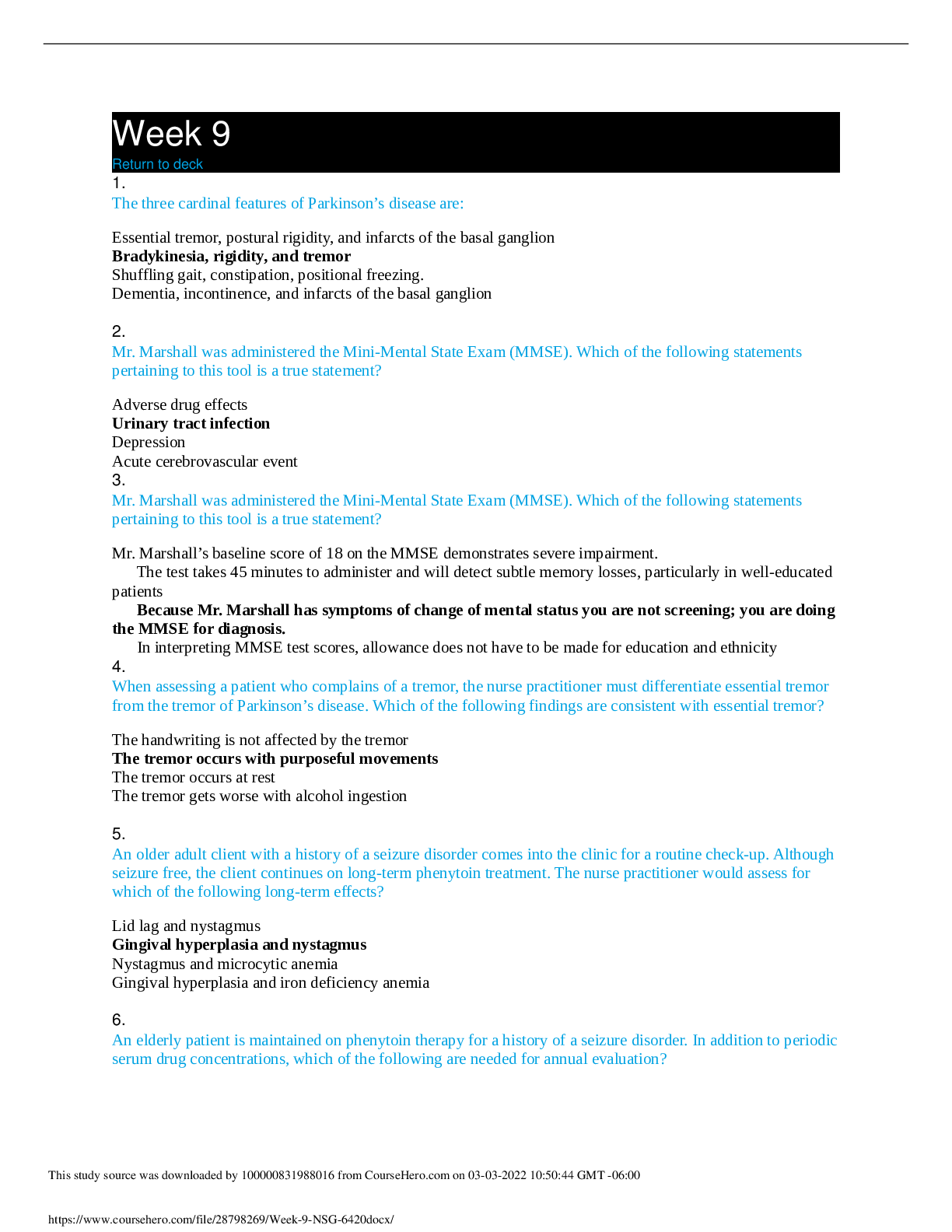NSG6420 Week 9 Quiz / NSG 6420 Week 9 Quiz (verified grade A) midterm.
Document Content and Description Below
Gerontology Class…. Week 1: 1. Question : The major impact of the physiological changes that occur with aging is: Reduced physiological reserve Reduced homeostatic mechanisms I... mpaired immunological response CORRECT All of the above Instructor Explanation: The major impact of all of these physiological changes can be highlighted with three primary points. First, there is a reduced physiological reserve of most body systems, particularly cardiac, respiratory, and renal. Second, there are reduced homeostatic mechanisms that fail to adjust regulatory systems such as temperature control and fluid and electrolyte balance. Third, there is impaired immunological function: infection risk is greater, and autoimmune diseases are more prevalent. (Kennedy-Malone 3) Kennedy-Malone, Laurie, Kathleen Fletcher, Lori Martin-Plank. Advanced Practice Nursing in the Care of Older Adults. F.A. Davis Company, 2014-01-14. VitalBook file. Question 2. Question : Men have faster and more efficient biotransformation of drugs and this is thought to be due to: Less obesity rates than women Prostate enlargement CORRECT Less estrogen than women Instructor Explanation: Men have faster and more efficient biotransformation, presumably because of serum testosterone. Conditions of increased or decreased liver perfusion alter the overall level of the drug that is absorbed and how it is metabolized. (Kennedy-Malone 5) Kennedy-Malone, Laurie, Kathleen Fletcher, Lori Martin-Plank. Advanced Practice Nursing in the Care of Older Adults. F.A. Davis Company, 2014-01-14. VitalBook file. Question 3. Question : The cytochrome p system involves enzymes that are generally: Inhibited by drugs Induced by drugs CORRECT Inhibited or induced by drugs Associated with decreased liver perfusion Instructor Explanation: Biotransformation occurs in all body tissues but primarily in the liver, where enzymatic activity (cytochrome P [CYP] system) alters and detoxifies the drug and prepares it for excretion. (Kennedy-Malone 5) Kennedy-Malone, Laurie, Kathleen Fletcher, Lori Martin-Plank. Advanced Practice Nursing in the Care of Older Adults. F.A. Davis Company, 2014-01-14. VitalBook file. Question 4. Question : Functional abilities are best assessed by: Self-report of function CORRECT Observed assessment of function A comprehensive head-to-toe examination Family report of function Instructor Explanation: Two well-established tools used to evaluate function in older adults are the Katz Activities of Daily Living Scale (Katz et al., 1963) and the Lawton and Brody scale for Instrumental Activities of Daily Living (Lawton & Brody, 1969). It is important to be cautious about self-report of function (rather than direct observation of function) and to ask, “Do you …?” instead of “Can you …?” in order to determine if patients actually perform the activity. (Kennedy-Malone 40) Kennedy-Malone, Laurie, Kathleen Fletcher, Lori Martin-Plank. Advanced Practice Nursing in the Care of Older Adults. F.A. Davis Company, 2014-01-14. VitalBook file. Question 5. Question : Iron Deficiency Anemia (IDA) is classified as a microcytic, hypochromic anemia. This classification refers to which of the following laboratory data? Hemoglobin and Hematocrit CORRECT Mean Corpuscular Volume (MCV) and Mean Corpuscular Hemoglobin (MCH) Serum ferritin and serum iron Total iron binding capacity and transferrin saturation Instructor Explanation: RBC indices reveal an MCV (mean corpuscular volume/RBC size) that will be decreased to <80 fL in adults; MCH (mean corpuscular hemoglobin/RBC color) will show hypochromia or pale cells; RBC distribution width (RDW)/volume variation will be increased. (Kennedy-Malone page 519) Kennedy-Malone, Laurie, Kathleen Fletcher, Lori Martin-Plank. Advanced Practice Nursing in the Care of Older Adults. F.A. Davis Company, 2014-01-14. VitalBook file. Question 6. Question : When interpreting laboratory data, you would expect to see the following in a patient with Anemia of Chronic Disease (ACD): Hemoglobin <12 g/dl, MCV decreased, MCH decreased Hemoglobin >12 g/dl, MCV increased, MCH increased CORRECT Hemoglobin <12 g/dl, MCV normal, MCH normal Hemoglobin >12 g/dl, MCV decreased, MCH increased Instructor Explanation: Hemoglobin (Hgb): <12 g/dL (120 g/L) women <13 g/dL (130 g/L) men Rarely <10 g/dL (100 g/L) Mean corpuscular volume: 80–96 mcm3 (normocytic) Mean corpuscular hemoglobin Normochromic (normal color) RBC distribution width: normal (Kennedy-Malone page 517) Kennedy-Malone, Laurie, Kathleen Fletcher, Lori Martin-Plank. Advanced Practice Nursing in the Care of [Show More]
Last updated: 1 year ago
Preview 1 out of 157 pages

Reviews( 0 )
Document information
Connected school, study & course
About the document
Uploaded On
Oct 21, 2020
Number of pages
157
Written in
Additional information
This document has been written for:
Uploaded
Oct 21, 2020
Downloads
0
Views
36

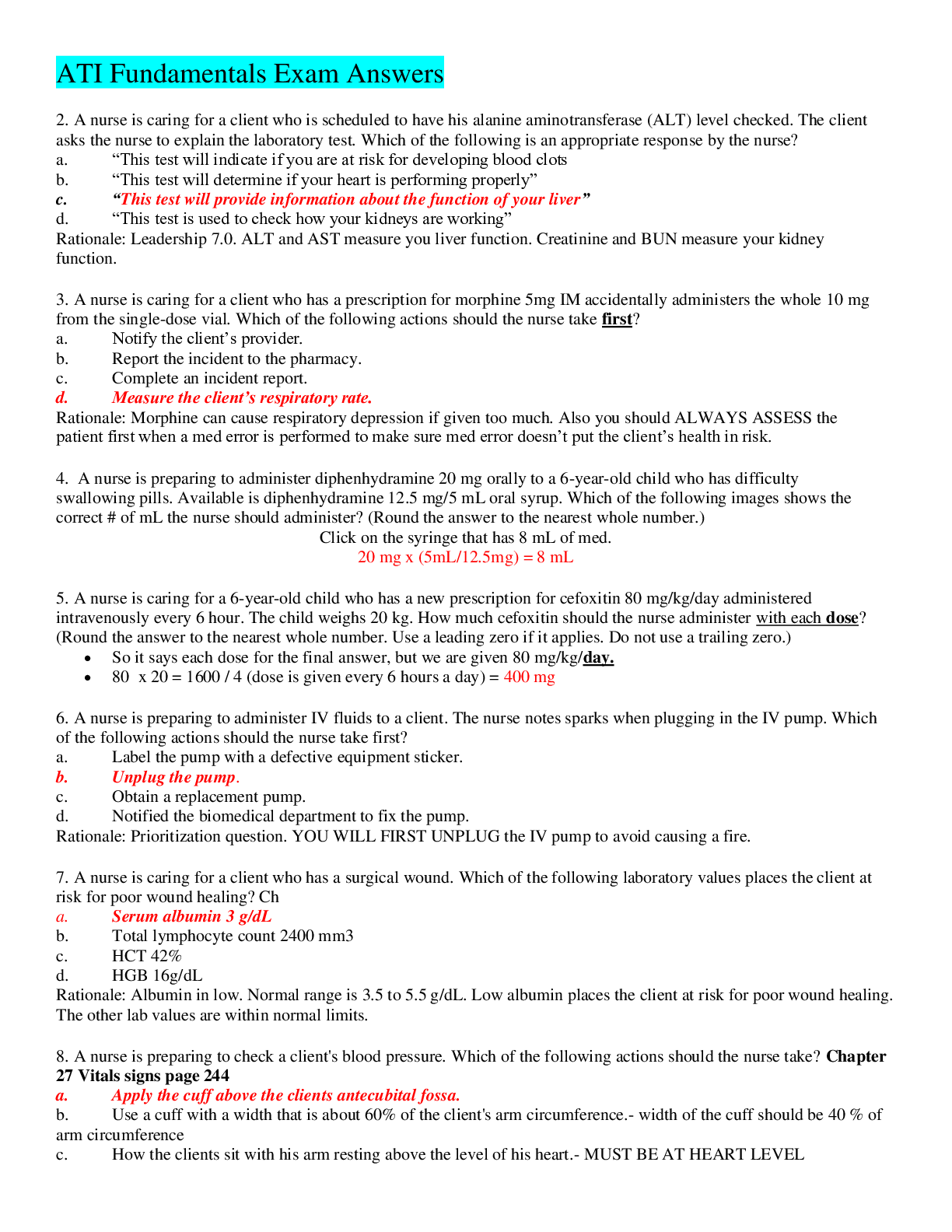
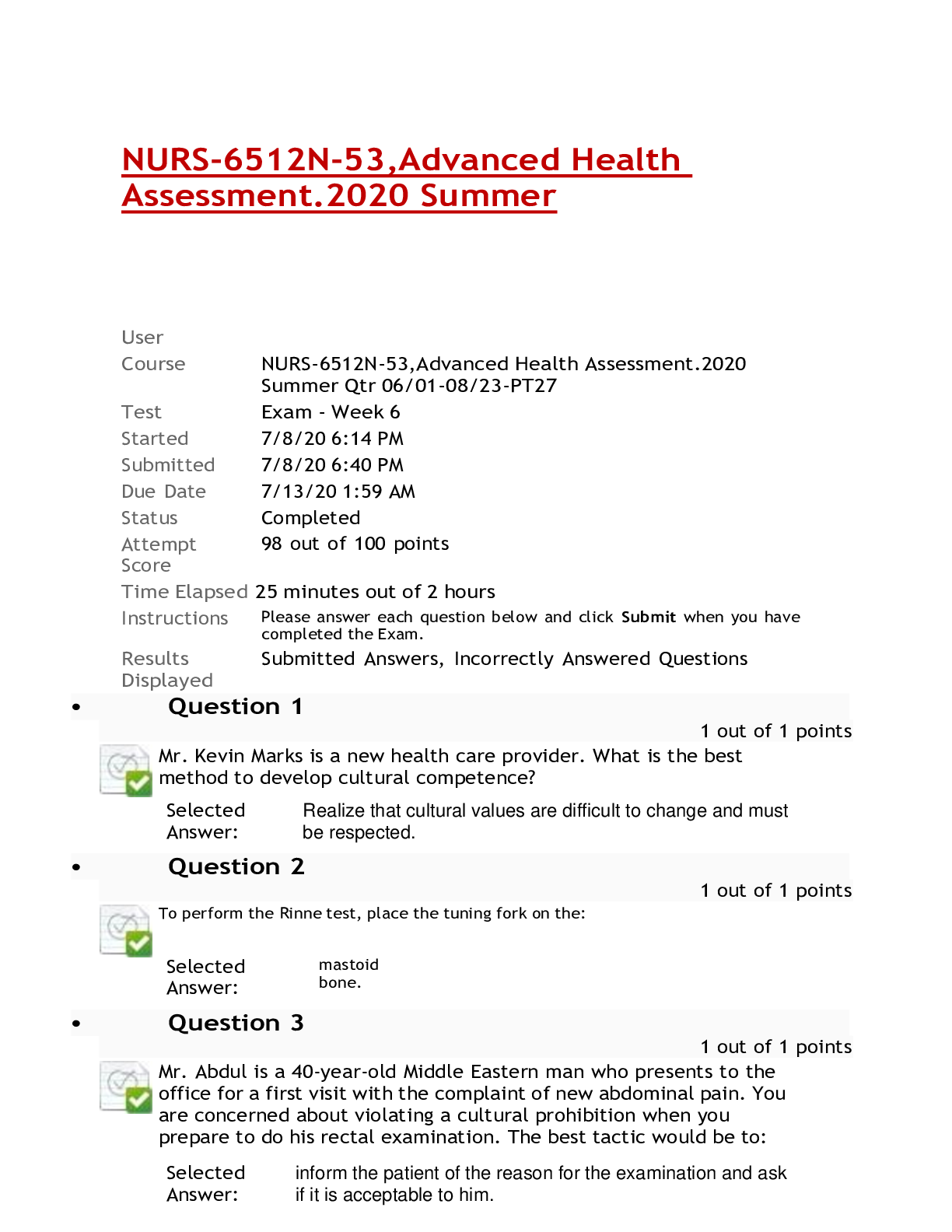
.png)
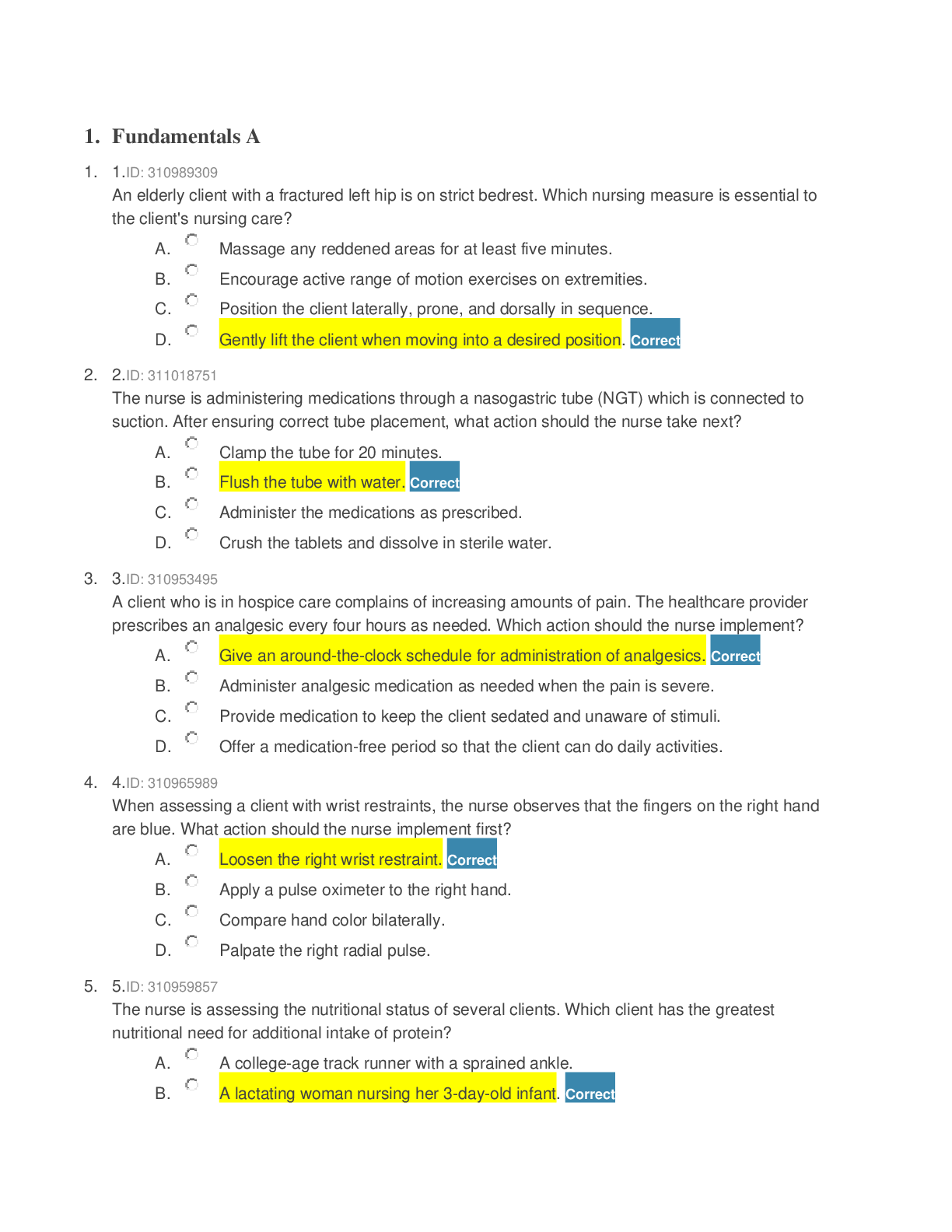
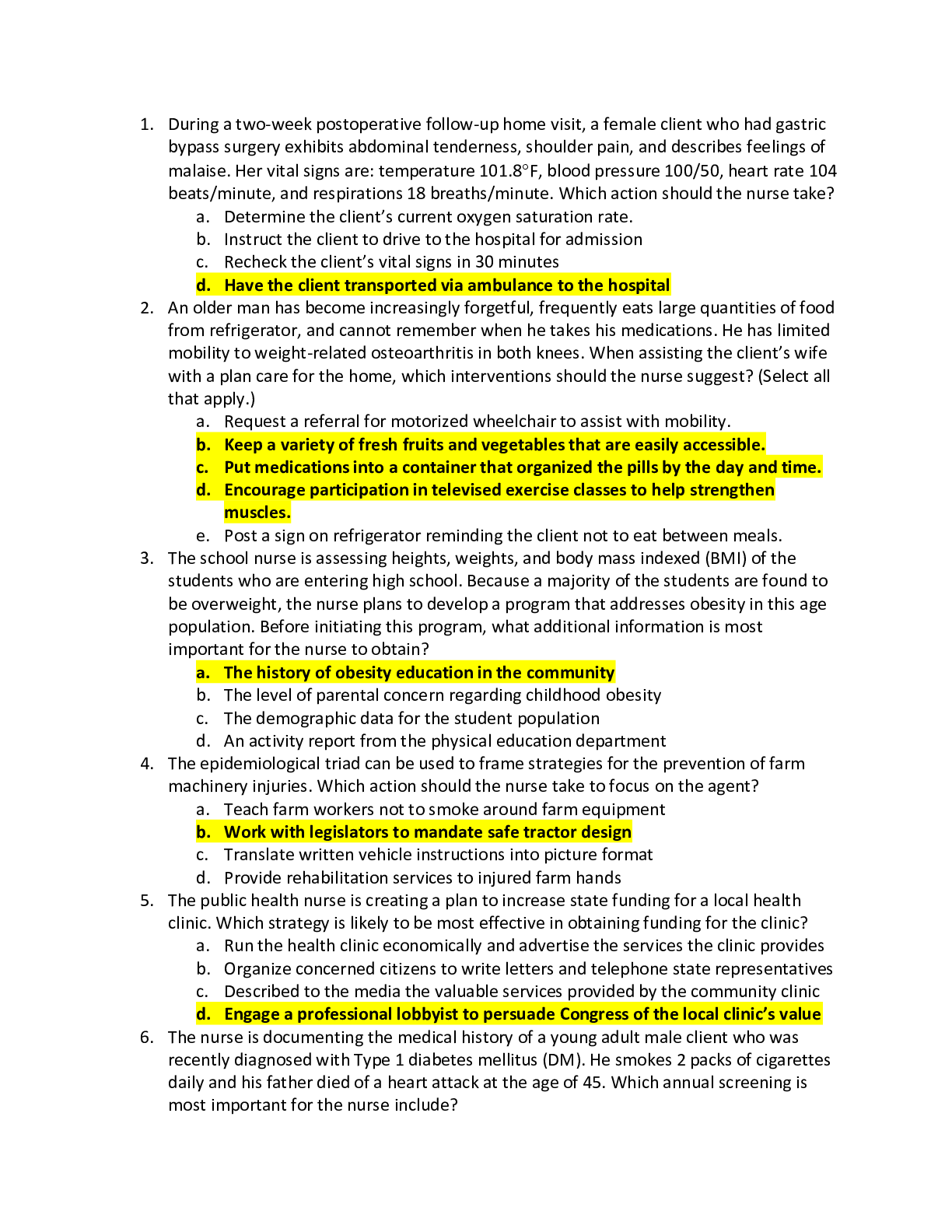
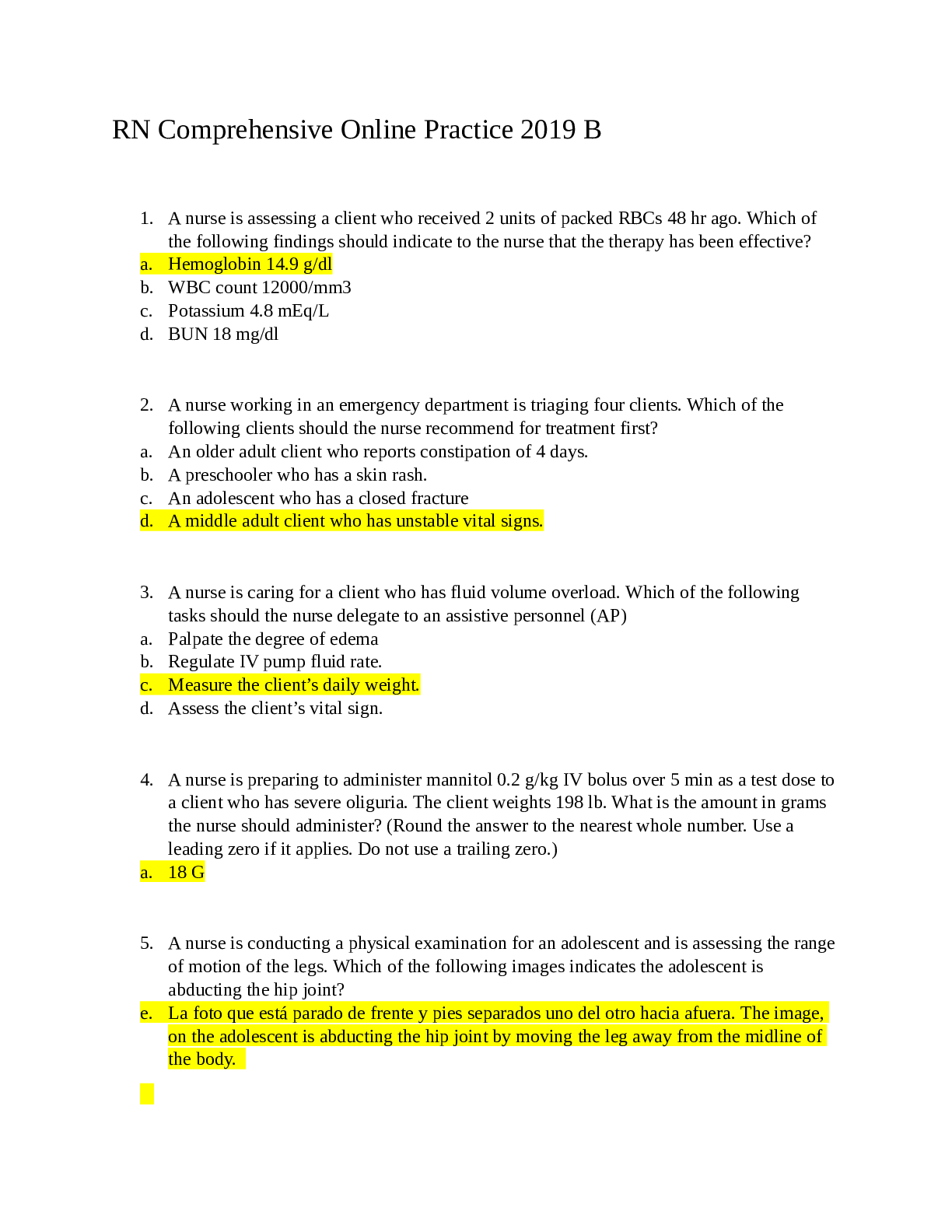

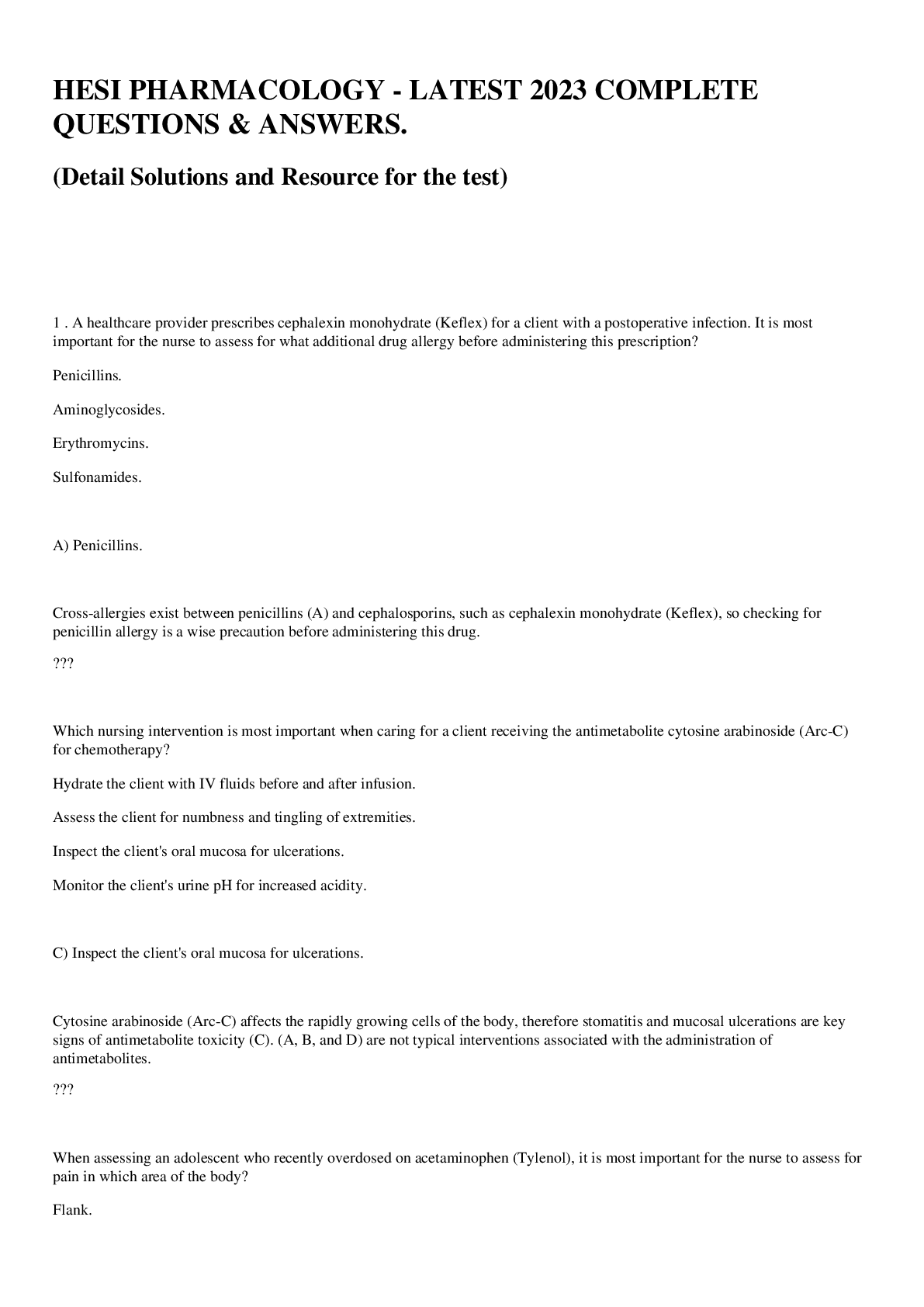
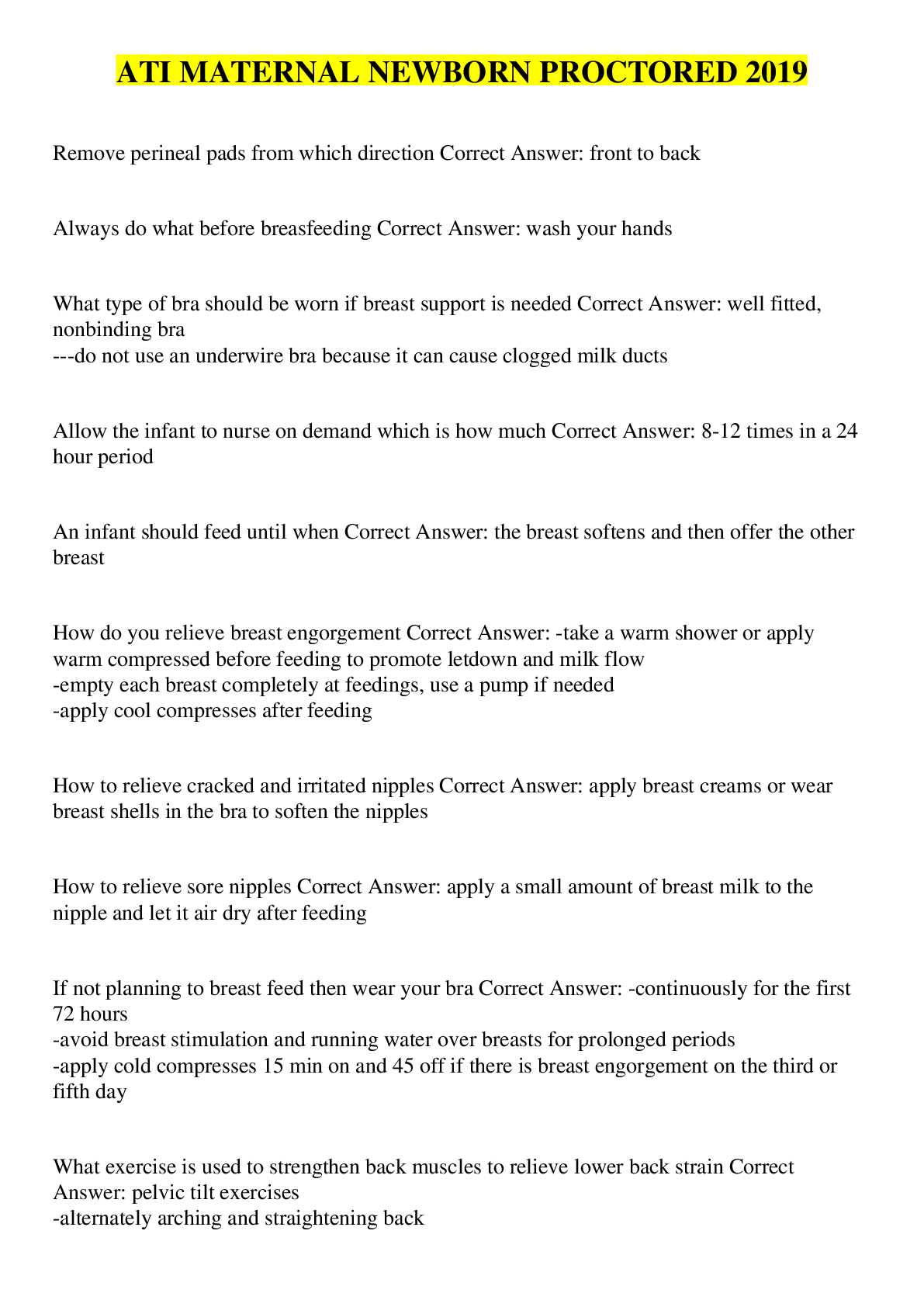
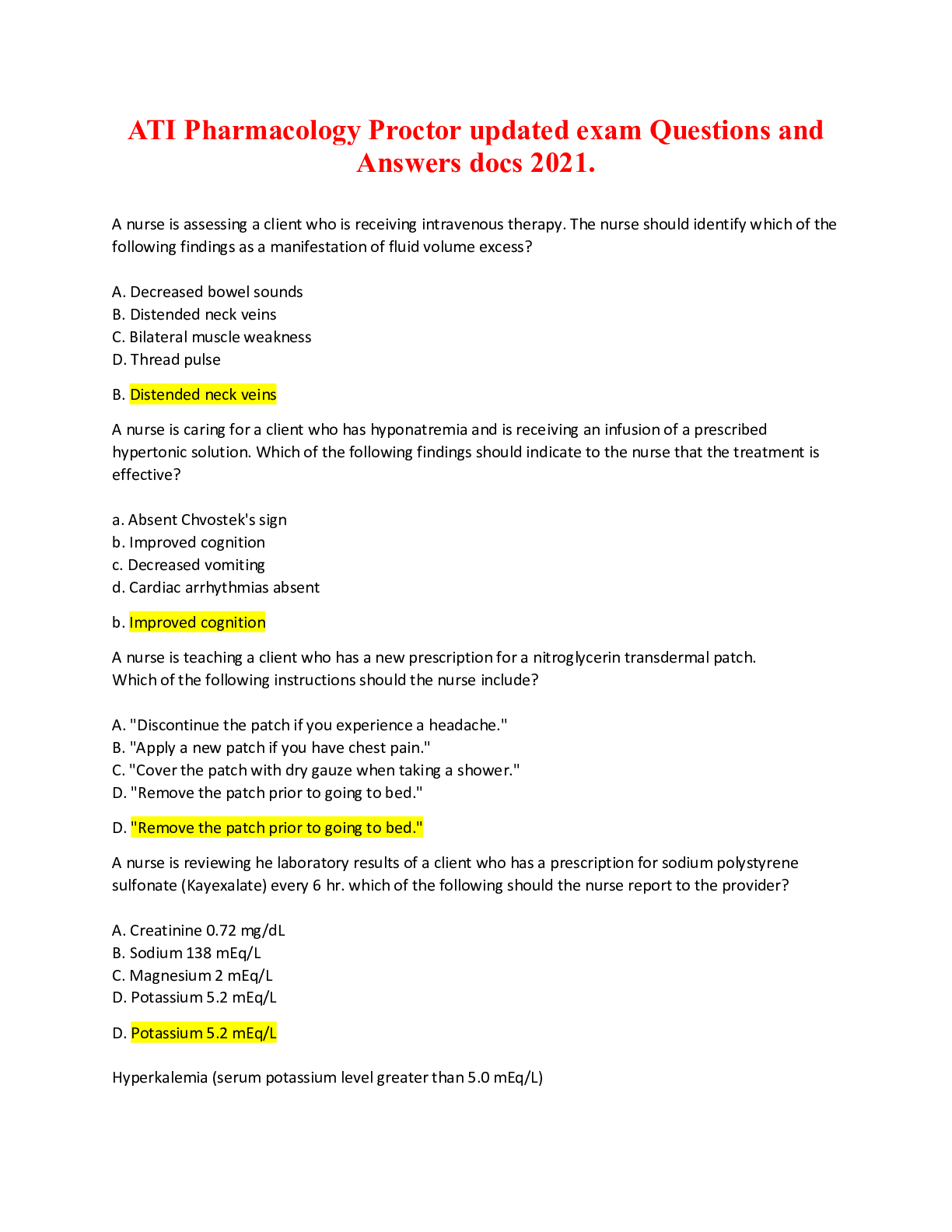

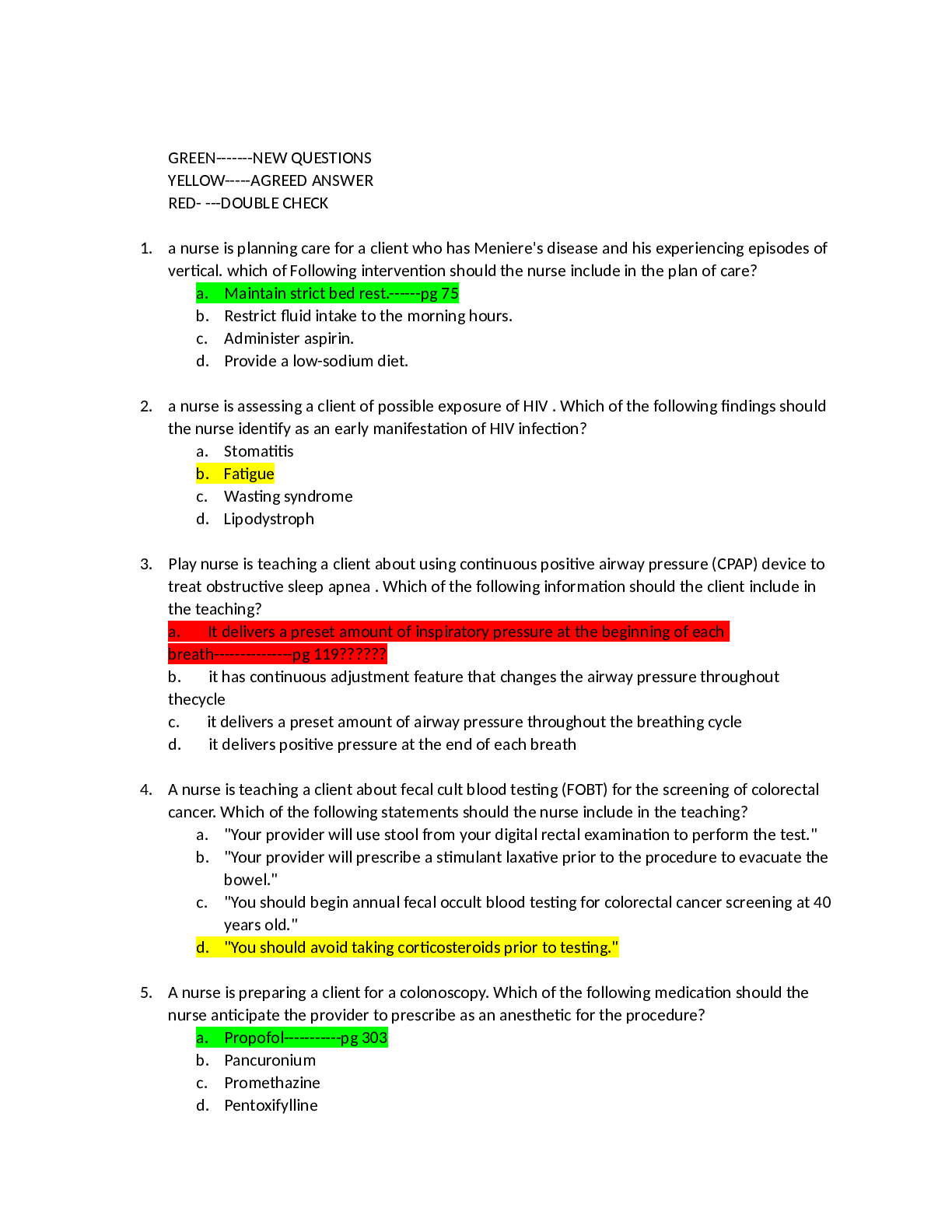
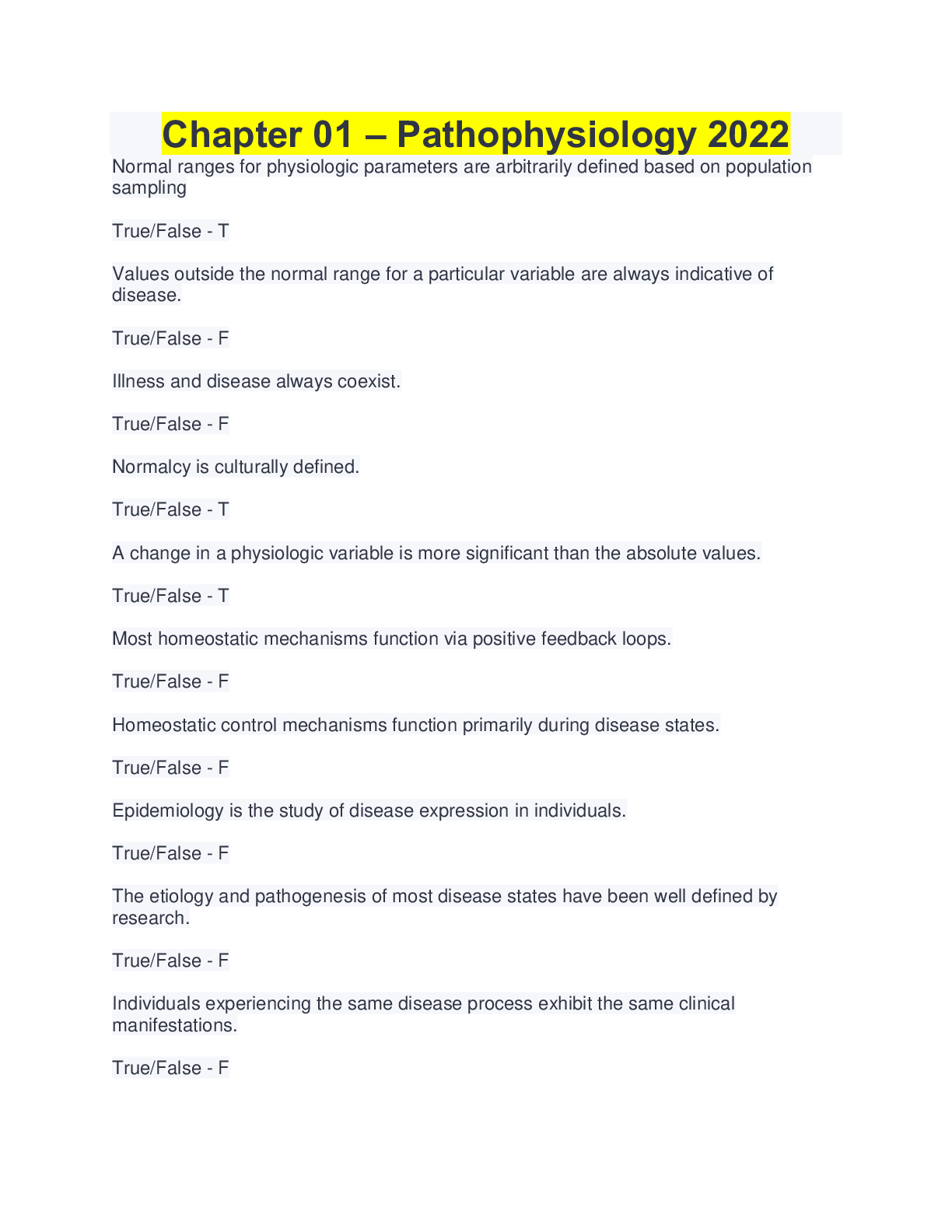

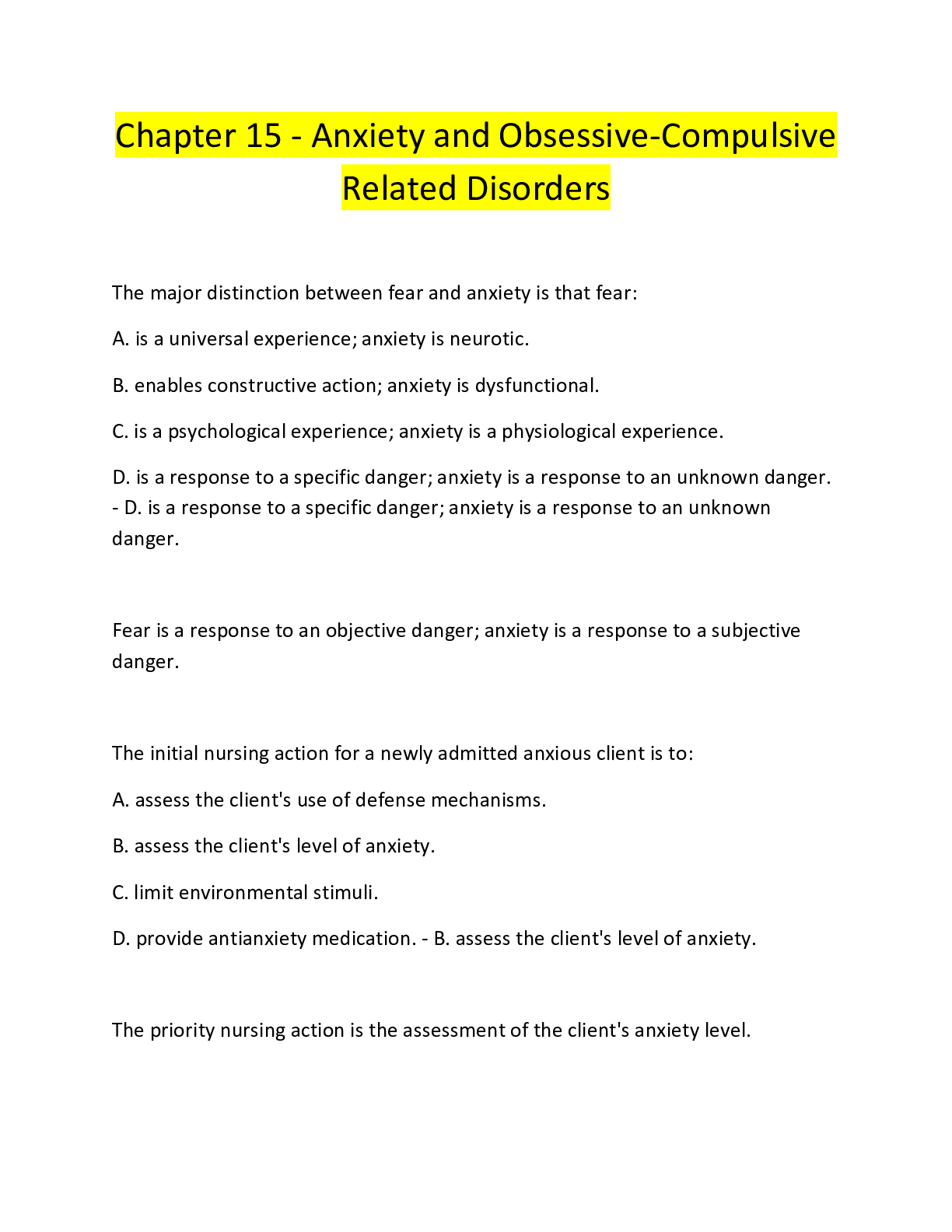

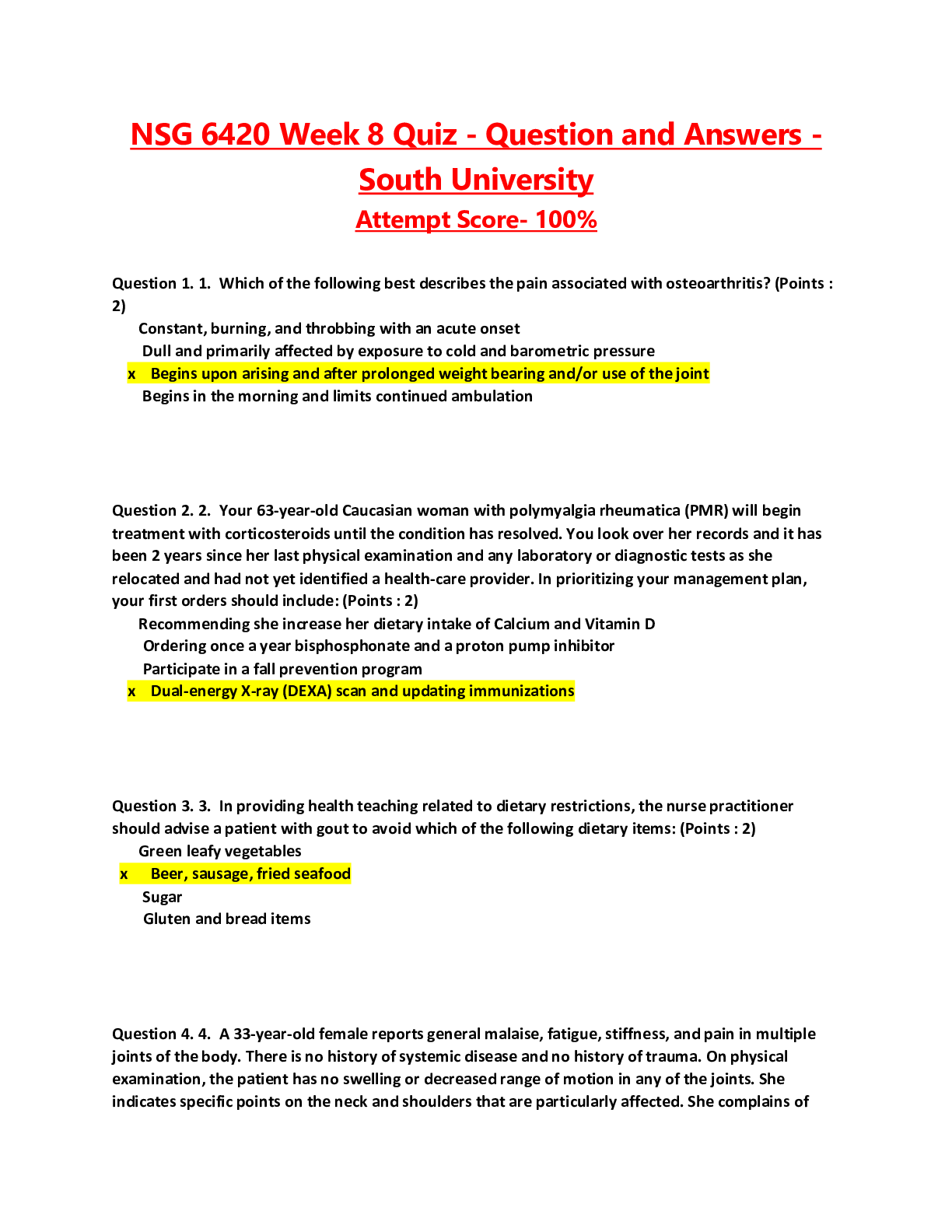

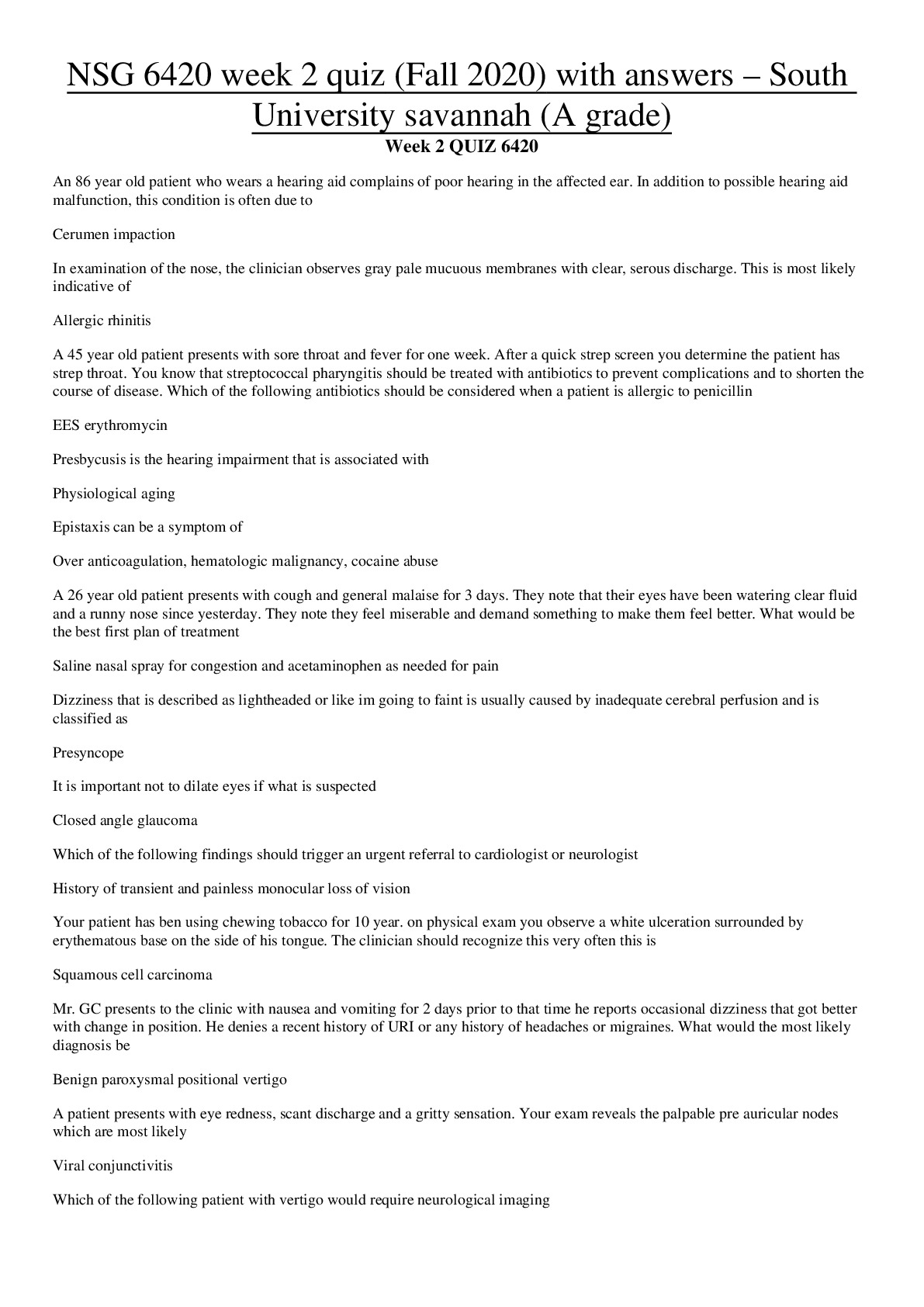
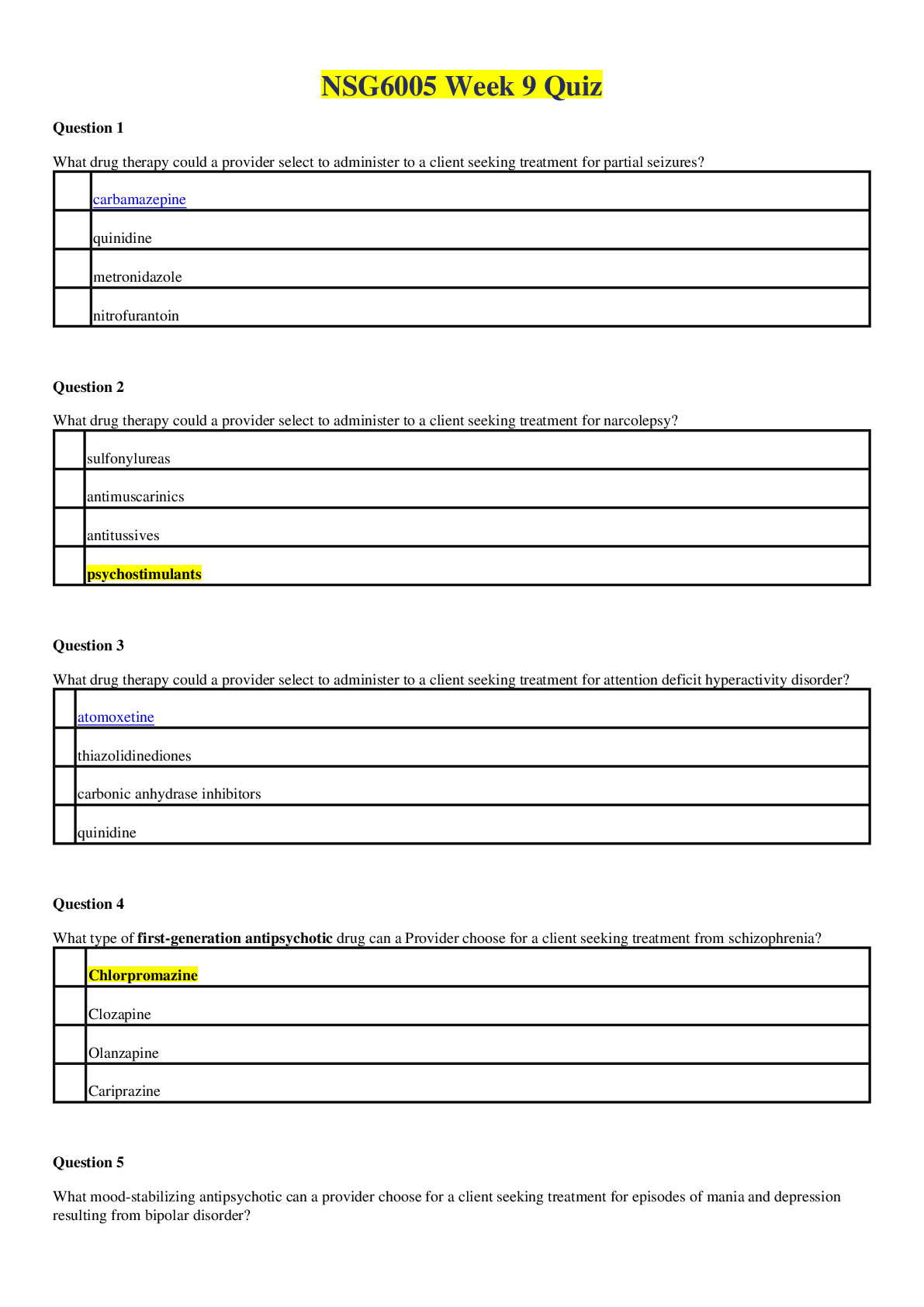
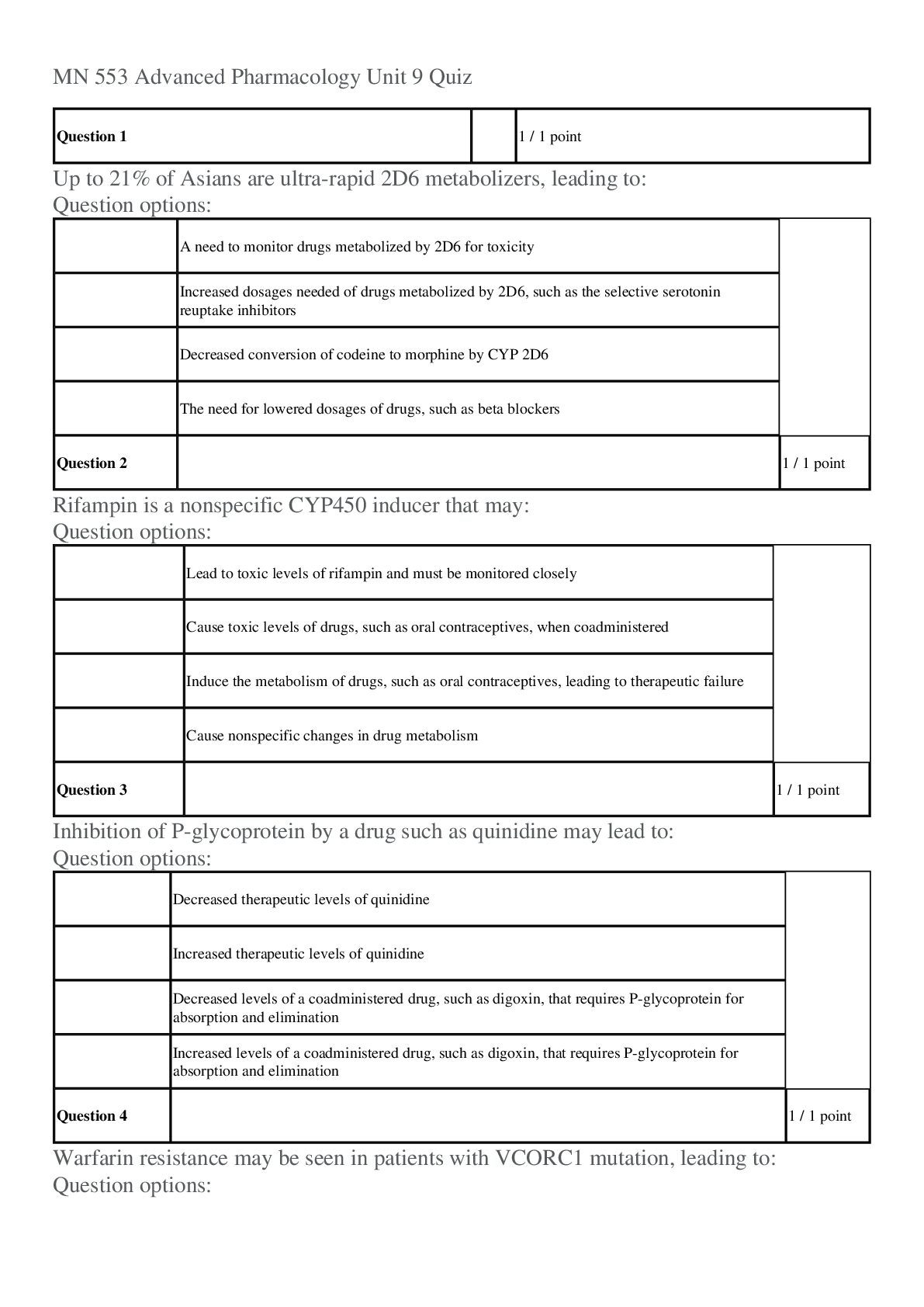
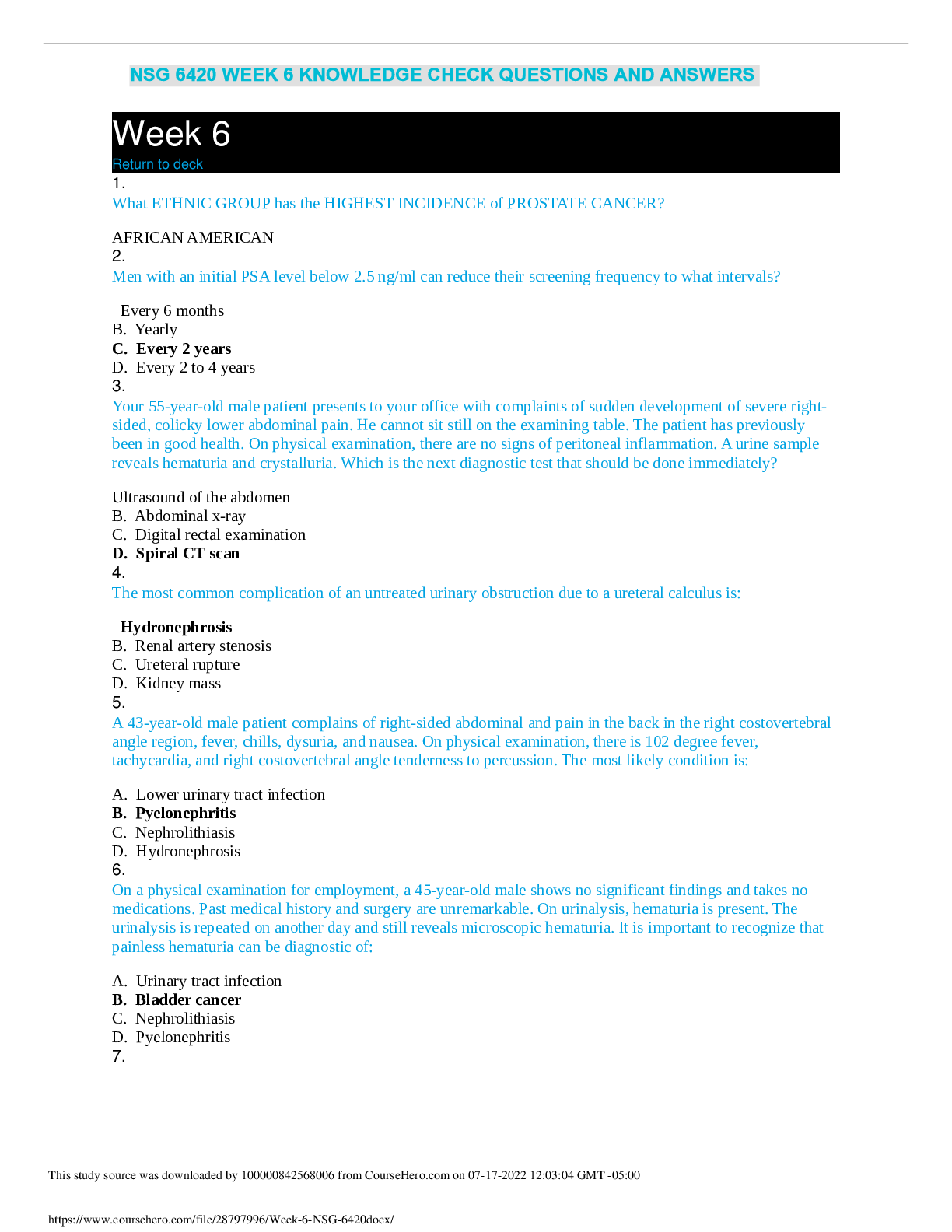
 (1).png)
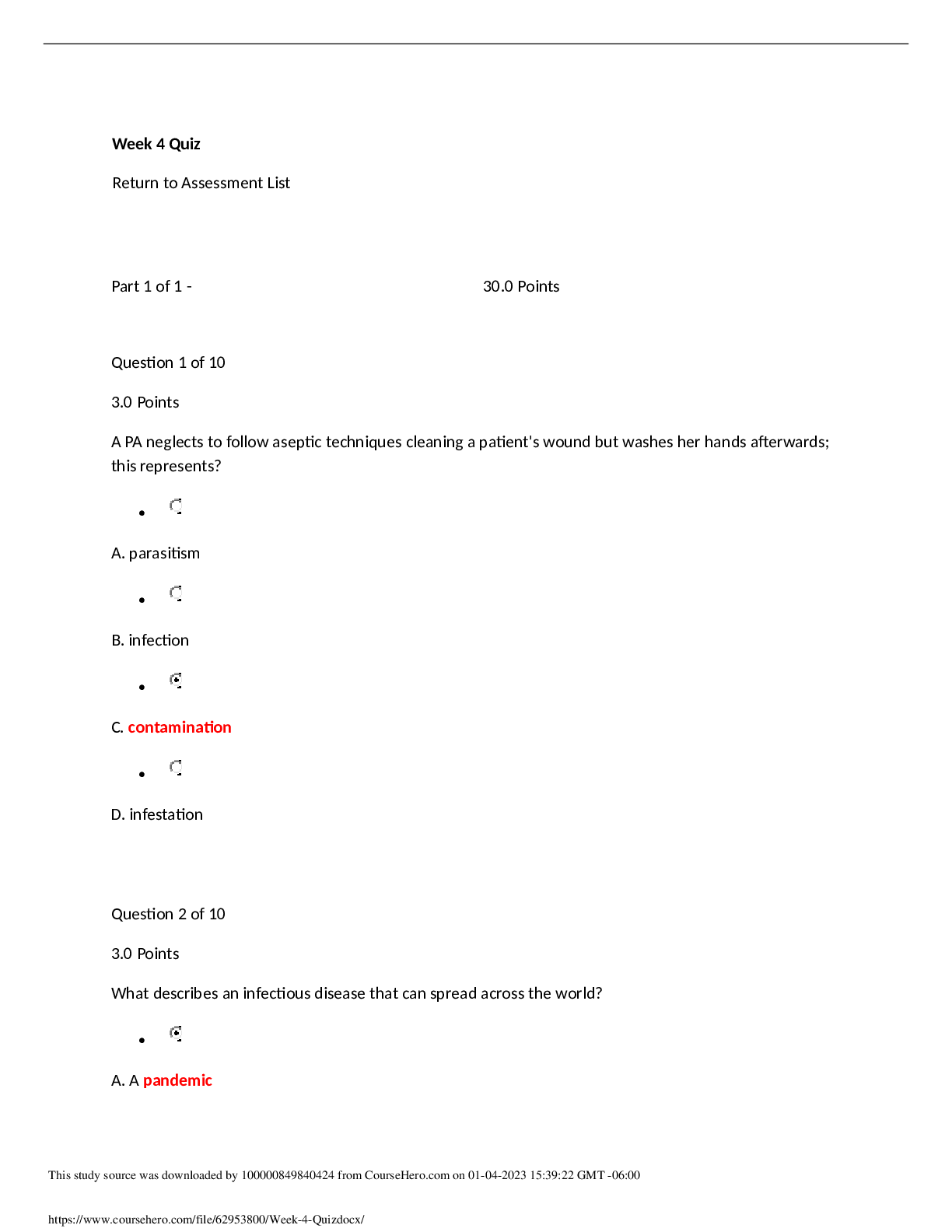

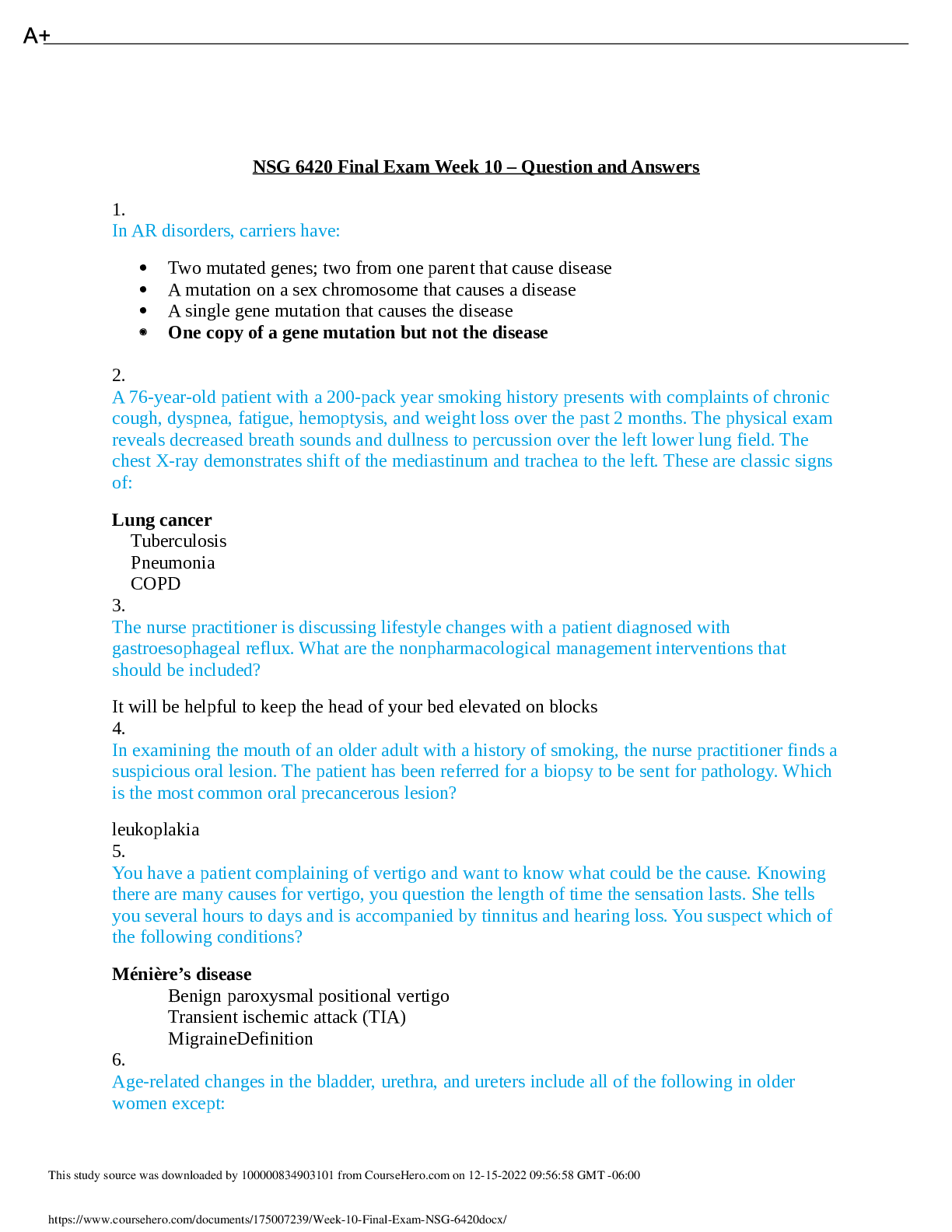
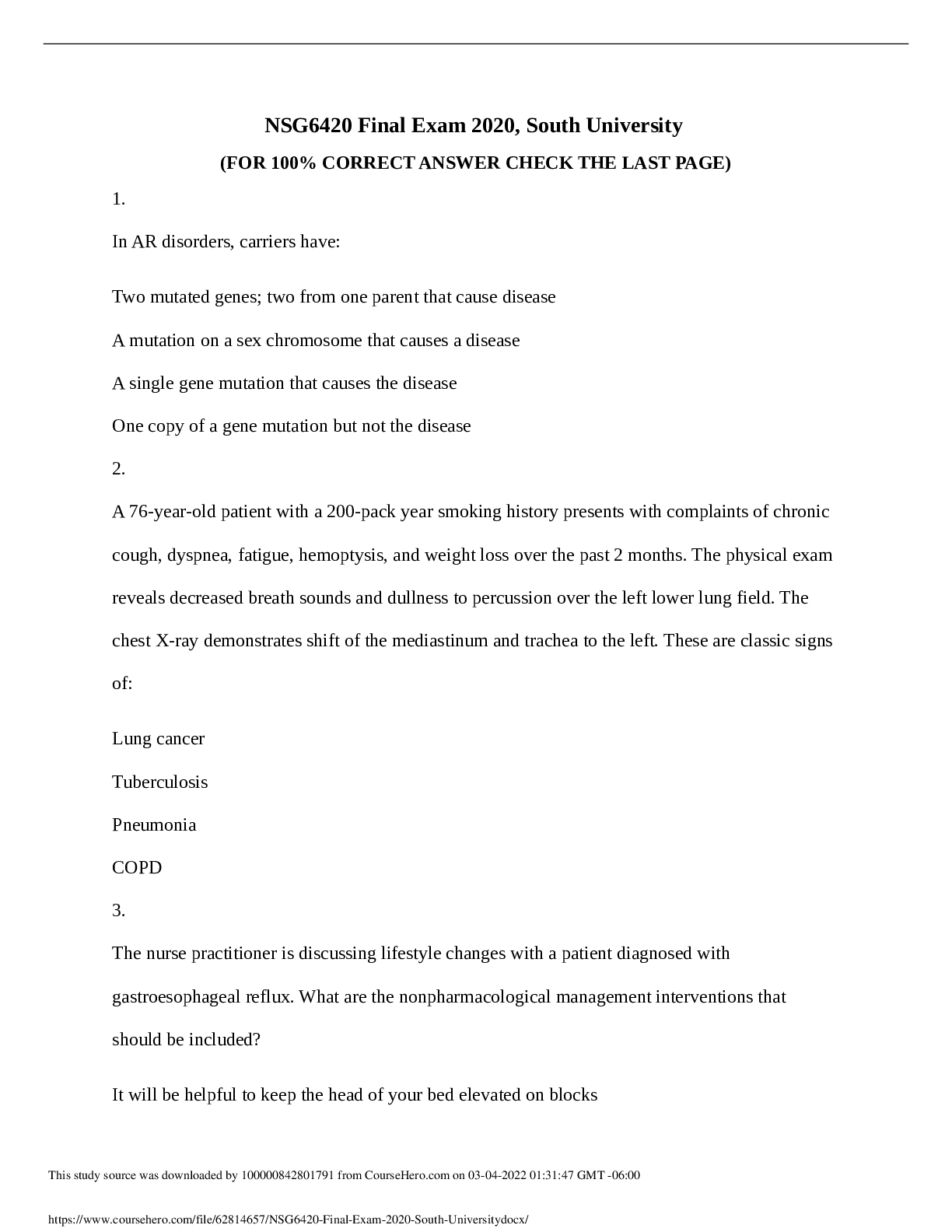
.png)

